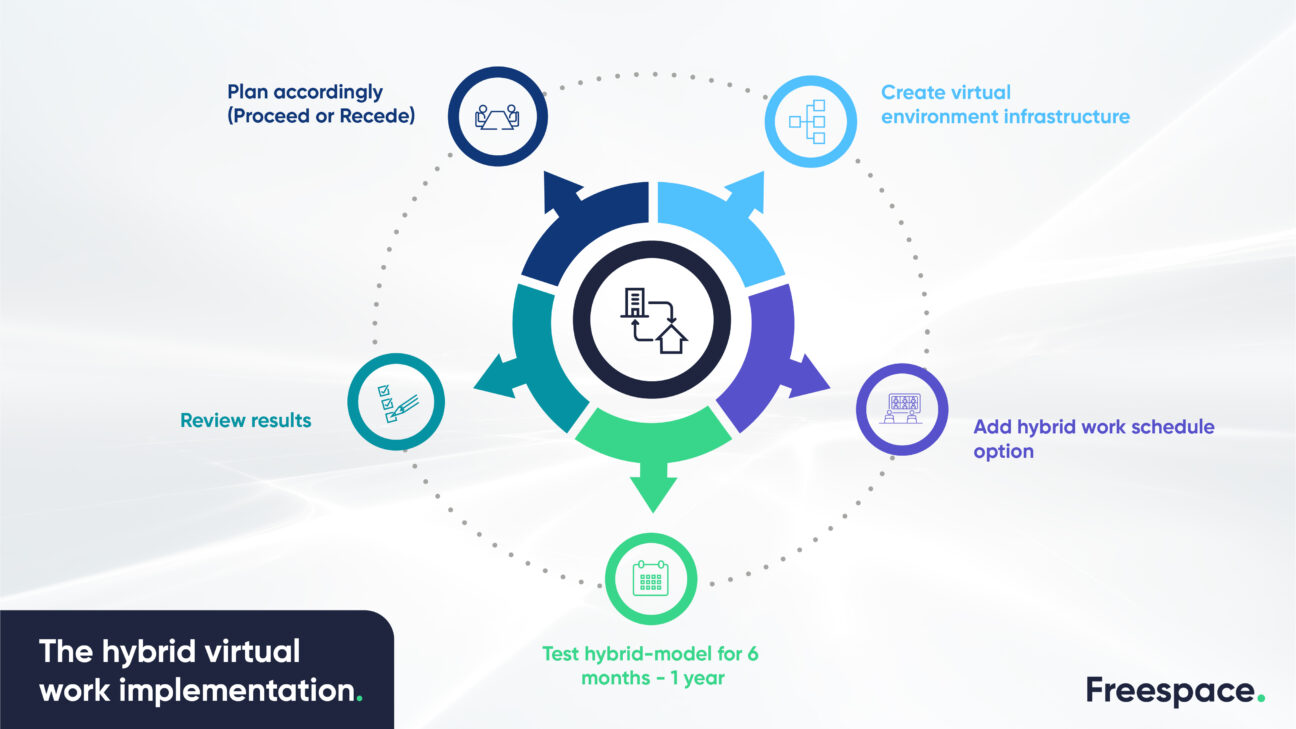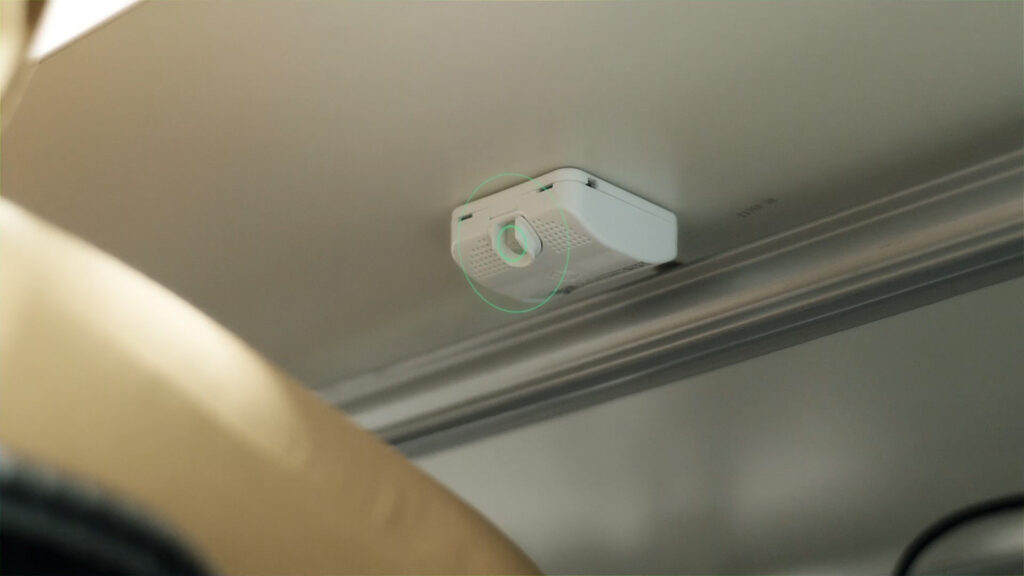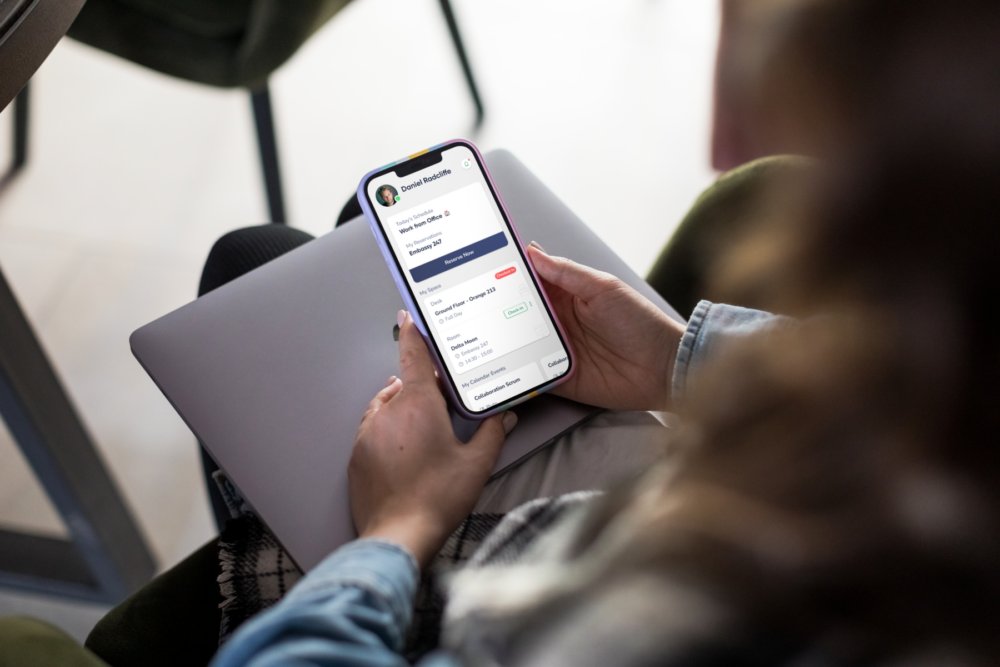

Although hybrid working has become the norm for the majority of companies, is your strategy working to the best of its ability? Successfully implementing a hybrid workplace strategy requires thorough planning and, ultimately, execution in order to maximize the benefits of office- and remote-based working environments.
It goes without saying a one-size-fits-all strategy does not exist as every organization is different; even within an organization, strategies could look different from location to location and across different departments and functions. Like Harvard Review states, “there are complex challenges requiring leaders to meet varied criteria while considering multiple stakeholders in the context of a volatile and complex environment.”
If you’re asking how to develop a hybrid working strategy, there are numerous factors you must take into account such as both business and individual needs, culture, resources, collaboration requirements, etc. All factors impact the employee experience and strategies must be revisited to continue to build and adjust them for success.
Here’s how to develop a hybrid working strategy for your organization and how Freespace can help.
Steps to Develop a Hybrid Working Strategy
- Plan Accordingly
- Create Virtual Environment Infrastructure
- Add Hybrid Work Schedule Option
- Test Hybrid Model
- Review Results

1. Plan Accordingly
To start with, you must plan, plan, plan. Assess the current tasks your team needs to complete and define what types of work should be done remotely or in the office; some are better suited to one environment.
From there, identify which teams and roles should be office-based. This is where the collaboration requirements come in, so determine which teams require regular physical teamwork. Once you have clearly defined these aspects, develop a plan for flexible scheduling. From alternating days in the office or having an entirely remote team, take these factors into consideration and form a plan to stick to.
2. Create Virtual Environment Infrastructure
If you have chosen flexibility for your organization, then the next step is to create a virtual environment infrastructure to ensure seamless communication between remote and in-person employees. There is an abundance of technology available to help get you set up, but it’s important to remember that your workplace technology solutions are intuitive and user-friendly.
It’s always best to avoid any obstacles that can create resistance within your team and instead accelerate adoption. You can do this by choosing cutting-edge technology that facilitates seamless communication, instant accessibility and on-the-spot information, like Freespace solutions.
One of the most user-friendly technology solutions for hybrid working is the Employee Experience App. It has a user-friendly platform that facilitates communication, simplifies collaboration, day-to-day scheduling and on-demand workplace amenity reservations. Ensuring an efficient workplace environment results in maintained employee connections and productivity.

When it comes to optimizing office spaces to accommodate a hybrid work model, Freespace’s space management software is the perfect solution. It ensures that space is used efficiently and effectively for both remote and on-site work by aligning occupancy demand and capacity and simplifying space allocation to maximize end-user adoption. This tool is flexible, scalable and customisable to meet the diverse needs of different locations and regions in a seamless and secure way.

Our workplace occupancy sensors also help to optimize office spaces by obtaining a complete picture of how your office space is being utilized and enhancing workplace flexibility. This includes passive occupancy data that is often overlooked yet vital for optimizing space usage. Trusted sensor technology makes space flexibility easy to provide, manage and enhance at scale when necessary.

As well as the technology required for creating a virtual work environment, it’s also important to establish policies and procedures so your entire team is on the same page. Set expectations for availability, communication protocols, security measure, health and safety measure when working remotely, and more.
3. Add Hybrid Work Schedule Option
Regardless of location, a hybrid work model must provide the right resources and space for employees. By adding a hybrid work schedule option alongside other helpful tools, employees will feel more confident about the flexible workplace.

The Employee Experience App provides employees with an easy way to plan their work day accordingly through a personalised hybrid schedule option. Employees can set up a collaboration network to coordinate attendance and space and gain visibility of future bookings and live check-in status through ’My circle’. Management is able to book spaces or schedule ‘team days’ on behalf of their team in advance through ‘My teams’ which enables them to book adjacent spaces within the areas / department pre-designed to the users.
Freespace is designed to make space management easy and convenient for employees. They can easily find the right space for their needs, reserving different types of spaces in advance, whether it’s a private office, collaborative workspace or quiet area for focused work. This mix of workspaces helps ensure everyone can be connected, engaged and productive, and with the ability to do ideation surveys with Freespace, you can see how your staff use the space instead of only focusing on whether it’s just occupied.

4. Test Hybrid Model
Developing a hybrid working strategy is all about experimentation, so it’s important to test the model for 6 months or up to a year for the implementation to see results. During this time, it’s important to remember to address any challenges head-on, whether that be communication breakdowns, managing remote teams or ensuring equal career growth opportunities. Being proactive is essential, so deal with any issues that arise promptly and effectively.

It’s also important to ensure that managers and senior team members are available to provide support, such as guidance, answering questions or providing resources. This will ensure employees remain productive in both remote- and office-based environments. This can be easily exercised if the 3 key areas are taken care of:
- Culture – Embrace growth and an adaptive mindset at your workplace.
- Space – Prioritize and work on flexibility.
- Technology – Key to managing hybrid work at scale.
Creating a comprehensive onboarding and training program to help employees, especially new recruits, understand the expectations, policies and procedures of your hybrid workplace. This program should cover the basics of remote working and provide ample resources for further learning.
5. Review Results
During the testing phase, track employee performance and engagement levels on an ongoing basis to identify areas that need improvement and ensure the hybrid workplace is achieving its desired outcomes.

Analyze the data from Freespace sensors to identify effective workspace design and make informed decisions about how to optimize areas that may be unused, under or overutilized. Plans for new space designs may be your next step in developing your hybrid workplace strategy, to ensure they meet the current needs of employees.
How to Develop a Hybrid Working Strategy with Freespace
A successful hybrid workplace strategy is the result of hard work and dedication from everyone involved. Remember to show appreciation for employee achievements, so you can keep morale high and encourage ongoing commitment to making the hybrid workplace a success.
Together with the right technology partner, like Freespace, you can create an efficient and collaborative work environment that fosters flexibility. Leverage our expertise and proven technology solutions used by 165k+ employees and 50+ global companies for your strategy.
Our latest release, DNAi, is our latest tool for enhancing hybrid working strategies. If you would like to learn more about how we implement this intelligence-driven solution, speak to us more.
Book a demo or contact us for more information today. Also, Freespace’s CEO has co-authored a book called “Work Made Easy: A Guide to Success in Hybrid Environments” for further guidance.


